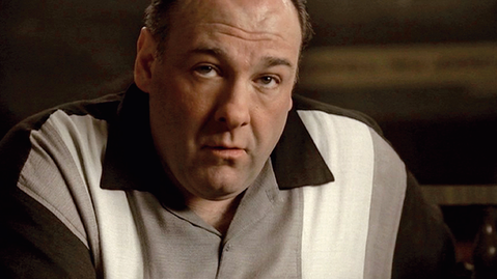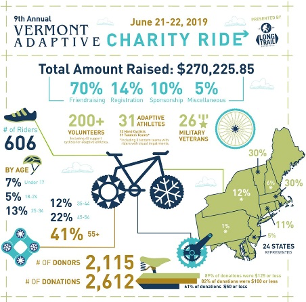Bill Gates didn’t know it, but when he wrote “Content is King” in 1996, he provided the Google rank playbook.
Part Two – Content is King
In January 1996, an essay entitled “content is king” was published.
Though the author of this note wasn’t the one who originally coined the phrase, his usage provided credibility no one else at the time could have.
The author’s name, Bill Gates.
“Content is where I expect much of the real money will be made on the Internet, just as it was in broadcasting.”
— —
In part one, I passed along a little information straight from the Al Capone of the web—Google.
Google informed webmasters what they needed to know about core updates and how to maintain coveted first page presence – content.
Unfortunately, the word content is as open to interpretation as the ending of The Soprano’s.
What is content? What is content marketing? What variations of content are there in today’s hyper-competitive playground known as the World Wide Web?
Lastly, why is content Google’s Pepto Bismol for the digital marketers, SEO’s and small businesses of the world? ( I mean, why do they care? Seriously. It’s their always changing algorithms causing the involuntary sprints to the loo. Since when do they care? I digress.)
When you’re through with this, hopefully, I’ll have provided a smidge of clarity and insight.
. . . And not another reason for you to be pissed off.

What is content?
Everything is content. Thanks for coming. I hope you enjoyed the chicken.
Seriously though, everything you do on your site is content.
Telling people about how your ‘Grand Papi started the business with nothin’ but a shovel and a wheelbarra’ to, now, where you’re building high-rises in Atlanta — that’s content.
Taking a selfie in the office with the hashtag #riseandgrind and posting it to Instagram, Facebook, and/or LinkedIn — while being tacky, yes, it too is content.
But Gates, as mentioned in his essay from 1996, defined content as —
“When it comes to an interactive network such as the Internet, the definition of “content” becomes very wide. For example, computer software is a form of content… But the broad opportunities for most companies involve supplying information or entertainment. No company is too small to participate.”
Simply put, content is everything and anything you put out there about your or your clients’ business—it’s all content. And the warm, apple-crisp delicious aspect of it all– you’re the one in control of it!
“One of the exciting things about the Internet is that anyone with a PC and a modem can publish whatever content they can create.”
That’s the power of the medium. The ultimate control over what YOU can say about YOU. Any kind and flavor. Any time you want. That’s why so many companies are “all in” with their content marketing. That and the fact the company who owns 92% of the marketplace went all Stone Cold Steve Austin and said—
“Because Goofy Google said so!”
Oh, and what the hell is a modem?
What is content marketing?
Content marketing, as defined by Hubspot, one of the leading developers and marketers for inbound marketing and sales, is —
“A strategic marketing and business process focused on creating and distributing valuable, relevant, and consistent content to attract and retain a clearly defined audience, and ultimately, to drive profitable customer action.”
Remember earlier, how I said content is anything and everything you put out there (the digital world) about you? Well, that encompasses a lot. Especially in a world where there were 4.4 million blogs posted every day in March of 2019. Couple that with Google updating algorithms daily—you need to make sure the content you pump out there is not only of the highest quality, but it’s the latest and greatest form of content out there today.
Simply put, stop trying to get MySpace friends.

That’s why I went back to my friends at Hubspot and found their Ultimate Guide to Content Marketing in 2019.
You’re welcome.
The types of content they suggest are as follows:
• Social Media
• Infographic
• Blog
• Podcast
• Video
• Paid Ad
Let’s go through each one real quick.
Social Media Content
Is it a quick tweet about what the latest tariffs mean to your retail sales? Yes.
Or a post with a bunch of pics telling your fans about the team building event you had at the lake? Yup.
What about an article you found interesting and thought your followers would too? You know it.
How about that selfie you took in the office saying #riseandgrind?

Tragic.
Anyway, it’s all social media content. It may not always be, well, good. But the beauty behind social media content is how it supplies the window for people to see into the company. Mom and pop to Starbucks. They all do it.
• It can educate about the services you provide.
• It can inform your consumer as to why it benefits them and their family.
• It could be a coupon/code for people to use at your upcoming sale.
• The possibilities are only as limited as your imagination.
Allow it to give the company some verisimilitude. And please, for the love of everything pure and holy—take a moment and think before you press send. Social media can giveth and social media can taketh away. If you’re not fully aware of how quick social media can shift perception…Well, the Earth is not flat, and you should feel free to read this and/or this.
Infographic Content
I’m not saying that I’m NOT a fan of other forms of content. Hell, this is a blog. Nonetheless, when I first discovered infographics, I fell in love. Why? I’ll get to that in a moment.
An infographic is data and information presented in an easy to understand graphic. For example, take a look at this one JEG DESIGN INC did for Vermont Adaptive Ski and Sports —

It’s sleek, attractive, informative, and to the point. But here is why I’m a huge fan of these—I do social media for numerous companies. During this time, I’ve observed what type of content gets restricted by the overseers at companies such as Facebook. If it’s a link to another site, no one sees it. If it’s purely text, your mother will see and like it, so that’s cool. However, whenever you upload a photo, people see it, don’t they?
This is where an infographic comes in.
(If you’re interested in discussing an infographic for you or your client’s business, contact Jon at JEG DESIGN INC today.)
Blog Content
A blog is exactly what you’re reading right now, and it is a powerhouse for inbound marketing.
Blogs tell a story. Blogs provide a narrative. Blogs furnish insight and information. Making you an authoritative figure while simultaneously tugging at heartstrings.
And blogs are ideal for links. Whether it be links to another credible source within your industry. Or backlinks to other pieces of content on your site. Or by taking the link of your blog and sharing it across all of your social media pages—the more you know, and the more you show, the more information you gift Google.
And the more Google gifts you.
(If you’re interested in discussing a blog for you or your client’s business, contact Keith at Short Bitter Half-Italian today.)
Podcast Content
6 million people listen to podcasts, just in the U.S. Podcasts can be enjoyed anywhere. They can range from a minute to a couple of hours. They can provide insight and expertise, promote products, services, or just build a relationship with your audience.
For a great example of how diverse a podcast can be, check out the work of The Ringer. They have podcasts from football to movies, to TV, to music, to food, and so much more.
Video Content
Many marketers, that I know personally, would claim, if you don’t have a video marketing plan, you don’t have a marketing plan.
Video marketing is omnipresent. I can’t go pump a gallon of gasoline without seeing Michael Strahan and his huge gap teeth promoting his clothing line at JC Penney.
Some video content, like the aforementioned Hall of Famer for the New York Football Giants, can be used to simply sell a product. And some can be used to identify a culture. To have fun. Or to just make people laugh like this one by Squatty Potty.
Video content used to cost a ton. Today, it’s only as expensive as your cell phone plan. Just have a strategy/script. I promise you, no one cares to hear your rant about how there are no Chinese food delivery restaurants in Rutland, Vermont. They don’t.
Be clever, be concise and remember, the ones who make it look easy and unscripted are the ones with the best scripts.
Paid Ad Content
Paid ad content is exactly what is sounds like. It’s paying for a banner on a website, boosting a post on social media, or purchasing Ad Words from Google. Recall earlier when I mentioned the lack of performance of some posts on Facebook? A major reason is a clear pay-to-play initiative many social networks have or are currently implementing. And they’re not alone. Take a look at a Google search these days. The organic posts are sometimes unfound until you hop to page two.
And you know what they say…If you want to hide a dead body, you hide them on page two of a Google search.
Conclusion
Before I wrap up with Google and content, I want you to think about the wonderful juxtaposition content marketing provides.
• The consumer doesn’t feel interrupted. (Or do they? More on that in part three.)
• They feast on your information at their discretion.
• Meanwhile, they’re being fed precisely what you cooked up for them.
• They get what they want on their terms, and it’s only what you provide. Aka: Your terms.
Okay, so back to that damn blog by Google. They stated if you want to assure your status in a Google search query, you must have content. And (no thanks necessary) I just provided to you six specific forms of content to use in 2019.
HOWEVER, it’s not just content Google wants. No, no. They want quality content. And, in some cases, contextual content.
But what exactly is quality content? Or better yet, how does Google define quality content?
Let’s ask our friend Bill again from the essay EVERYONE should read…
“Those who succeed will propel the Internet forward as a marketplace of ideas, experiences, and products-a marketplace of content.”
Those who succeeded are those at Google.
In the final installment, I will go back to Google and show you precisely what they said and exactly what you can do about it.
TO BE CONTINUED…
If you feel your website is in need of a jumpstart, which does effect your Google ranking, contact Jon at JEG DESIGN INC today.
~
#GoogleRanking #GoogleRankings #Content #ContentMarketing #SEOStrategy #WebDesign #DigitalMarketing #SocialMedia #SocialMediaMarketing #JEGDesign
~
Written by Keith Hannigan. Keith is a freelance writer with over a decade of experience in marketing and advertising. He’s written for a variety of industries from farming to web design. To contact Keith, email him at [email protected] or find him on LinkedIn.
~
This content is the property of JEG DESIGN INC. For more information about JEG, follow them on Twitter and be sure to like their Facebook page.
~



